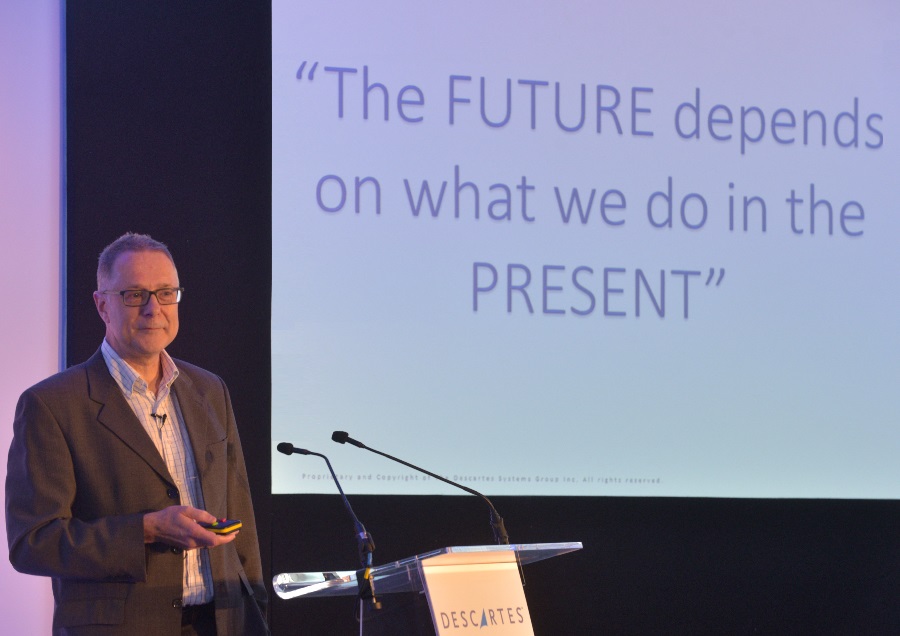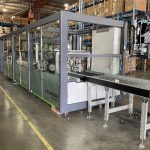Industry Talk
Regular Industry Development Updates, Opinions and Talking Points relating to Manufacturing, the Supply Chain and Logistics.Delivering on sustainable customer expectations

The pandemic has caused many people to become heavily dependent on ecommerce. But while home deliveries have been a lifesaver for those stuck inside during lockdowns, and for those shielding, much of the environmental impact has been overlooked. With the number of vans that are making deliveries increasing dramatically, delivery companies need to be mindful about their carbon footprint.
While the pressure and reliance on ecommerce is growing, the focus on climate change and reducing our carbon footprint is also increasing. Recent research from global logistics provider UPS has found that sustainability is the second most important driver for 75% of consumers when choosing a retailer! Additionally, 54% of UK consumers want retailers to work with delivery providers who use electric or low-emission vehicles in order to reduce their carbon footprint. Retailers, and delivery services, need to prioritise their environmental impact in order to remain competitive and meet these developing consumer expectations.
So what can be done to make deliveries more energy efficient and sustainable? Andrew Tavener, Head of Marketing, Descartes UK considers how deliveries can be more environmentally friendly and efficient, while ensuring businesses adhere to changing consumer expectations?
Efficient deliveries
It is possible to make deliveries more environmentally friendly by introducing technology to improve operational efficiency such as route optimisation and scheduling software, as well as mobile data with the use of telematics data. This not only improves the customer experience, but crucially for retailers and delivery services, supports consumer sustainability expectations. Telematics data can be used to produce fuel efficiency reports, through a comparison of vehicles and drivers’ fuel consumption helping to improve drivers’ habits by reducing engine idling, revving and speeding. This data helps to identify improvement areas when training drivers to drive more efficiently and can also reduce vehicle maintenance and servicing, in turn contributing to lower costs and carbon emissions and maximising profits.
Implementing mobile data communications and advanced routing solutions will enable transport operators to use fewer vehicles to deliver more goods in fewer miles. Delivery routing and scheduling software will help to increase delivery capacity ensuring drivers take the most efficient route possible and to re-route vehicles to avoid traffic issues. Additionally, through increased visibility, transport operators are able to add new jobs and ensure that the process is smooth and transparent for the end customer. Alerting customers of the status of a delivery and any delays will also improve first time delivery rates and eliminate unnecessary return trips while improving customer satisfaction with the service.
Electric vehicles, including vans, cars and even bikes and e-Scooters can also benefit from using telematics and routing software. The routing software for electric vehicles allows for range and battery charging, while for bicycles it can also take advantage of special routes that are not accessible for powered vehicles. With real-time traffic information, delivery schedules can be adapted accordingly, taking into account the various speed profiles for each type of vehicle. Implementing solutions which make certain that electric vehicles fulfil their potential in terms of the number of deliveries in the range available means that delivery organisations and retailers will add yet more sustainability initiatives into their operations.
Routing, mobile and telematics software can reduce fuel consumption and CO2 emissions across an entire fleet – essential in the fight against climate change and to align with consumer expectations for sustainable retailing. Add to that the potential of a greatly increased delivery capacity and ensuring customer satisfaction and there are considerable benefits to be realised.
Choosing the environment
There are environmentally friendly solutions readily available for courier services, delivery companies and retailers to support integration of more sustainable practices into their business operations, while also benefiting from them in terms of customer satisfaction and retention. For example, using a system that automates manual processes by eliminating physical documents, such as paper-based driver logs or proof of delivery documents will minimise the carbon footprint associated with creating and disposing of large amounts of paperwork. Limiting greenhouse gas emissions associated with any delivery, through introducing operational efficiencies and reducing fuel consumption, further ensures that companies are doing the best they can to work towards that sustainability goal.
There is no doubt over the next few years organisations will need to embrace the opportunity to adopt the tools which help streamline deliveries to be more energy efficient and sustainable, especially with increasing deliveries, driver shortages and the continuing shift towards ecommerce. By introducing operational efficiencies and making a conscious effort to reduce their carbon footprint now, delivery companies can quickly become more sustainable, in line with consumer expectations and help to safeguard the environment – and their business – for the long-term. After all, with sustainability becoming a huge concern for consumers and something companies are being held accountable for, retailers need to align with these changing beliefs in order to remain competitive and ultimately thrive in the future.










